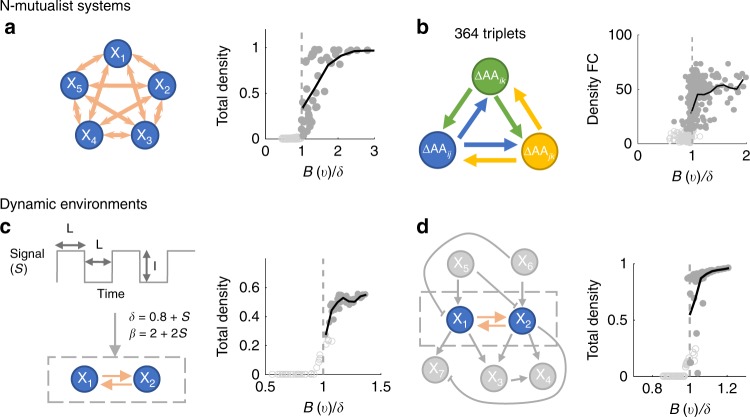Fig. 4.
Application of the metric in complex settings. a A simulated mutualistic system with five partners. Parameters in the model are functions of two independent variables. Using 100 data points, we obtained a B(v) through clibration. B(v)/δ successfully predicts coexistence versus collapse for 98.6% of a new set of 2500 data points (100 points are shown) and it is also predictive of total density. b Experimental auxotrophic triplets that are comprised of 91 E. coli double-auxotrophs with the same set of amino acid deficiencies in Fig. 3i–k. This experimental validation demonstrates the generality of our framework beyond pairwise interactions. c A system that is modulated by an oscillatory signal. The oscillatory signal S is described by I (intensity) and L (duration). The signal modulates δ and β temporally. I and L are the two system variables used in calibration. The procedure achieves a prediction accuracy of 97.3% for new data. d A simulated mutualistic system that coinhabits with 5 other populations. X1 and X2 are the mutualistic partners. X3–X7 are bystander populations that either modulate or are modulated by X1 and X2. B(v)/δ successfully predicts 92.3% of new data in this example

